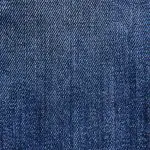You’ll find jute fabric naturally resists fire because it chars instead of melting, slowing ignition and flame spread better than many synthetics. Its cellulose and lignin content help limit burning and reduce toxic smoke. You can also enhance its fire retardancy with eco-friendly chemical treatments that boost char formation. Jute’s fire resistance makes it great for construction, automotive, and furniture uses. Keep exploring to understand how treatments, testing, and future trends improve its safety and sustainability.
Table of Contents
Key Takeaways
- Jute fiber naturally resists fire due to its cellulose structure and lignin content, which promote charring and slow flame spread without melting.
- Unlike synthetic fabrics, jute chars instead of melting, reducing toxic fumes and flaming droplets during combustion.
- Chemical treatments like ammonium phosphate enhance jute’s fire retardancy by increasing char formation and thermal stability.
- Fire testing methods such as Limiting Oxygen Index and Vertical Flame Test assess jute fabric’s flame resistance and combustion behavior.
- Fire retardant jute offers eco-friendly benefits, including biodegradability, low toxicity, and reduced environmental impact compared to synthetic alternatives.
Understanding the Composition of Jute Fiber
Although you mightn’t realize it, jute fiber’s unique composition plays an essential role in its fire retardant properties.
When you look closely, jute is primarily made of cellulose, hemicellulose, and lignin. These natural components give the fiber strength and durability. Lignin, in particular, contains aromatic rings that contribute to thermal stability.
You’ll also find moisture content within the fiber, which can help slow down ignition. Unlike synthetic fibers, jute doesn’t burn easily because its structure allows it to char rather than melt. This charring creates a protective barrier, reducing flame spread.
Understanding these elements helps you appreciate why jute fabric behaves differently when exposed to fire. This knowledge sets the stage for exploring how the fabric’s natural fire resistance actually works.
Natural Fire Resistance of Jute Fabric
You’ll find that jute fabric naturally resists fire better than many synthetic materials due to its unique fiber composition.
Its cellulose structure helps slow down ignition and burning.
Let’s explore how these properties give jute an edge in fire safety compared to man-made fabrics.
Jute’S Inherent Fire Resistance
Because jute fibers contain natural lignin and cellulose, they offer a degree of inherent fire resistance that many synthetic fabrics lack. When you choose jute, you’re not just picking a natural material; you’re embracing safety advantages embedded in its structure.
This inherent resistance means jute is less likely to ignite quickly, giving you precious extra seconds to react in emergencies. Here’s why you’ll appreciate jute’s fire resistance:
- It chars rather than melts, reducing flaming droplets that cause burns.
- It self-extinguishes when the heat source is removed, limiting fire spread.
- It produces less toxic smoke, helping you breathe easier during incidents.
- It withstands higher temperatures longer, providing more protection.
Choosing jute gives you natural fire safety without compromising sustainability or style.
Fiber Composition Impact
Understanding why jute resists fire starts with examining its fiber composition. When you look closely, jute fibers contain a high percentage of cellulose and lignin, which play key roles in its fire behavior.
Lignin’s natural structure helps slow down combustion, acting like a barrier that limits flame spread. You’ll also find that jute’s moisture content contributes to its fire resistance by absorbing heat before ignition.
Plus, the hollow, tubular structure of the fibers reduces the material’s density, which means less fuel for flames. Because of this unique combination, jute doesn’t ignite easily and burns slower than many other natural fibers.
Comparison With Synthetic Fabrics
While synthetic fabrics often rely on chemical treatments to resist fire, jute fabric naturally offers fire retardant properties without added substances.
When you choose jute, you get durability and safety combined through its inherent resistance.
Synthetic fibers, on the other hand, can melt or release toxic fumes when exposed to flames, which is a serious hazard you want to avoid.
Here’s why jute stands out:
- You reduce exposure to harmful chemicals.
- You benefit from slower ignition and reduced flame spread.
- You enjoy a more eco-friendly option that decomposes naturally.
- You experience peace of mind knowing your fabric is safer in fire scenarios.
Comparison Between Jute and Synthetic Fabrics in Fire Safety
You’ll notice jute and synthetic fabrics behave quite differently when exposed to fire, with jute generally burning slower.
Understanding their heat resistance levels can help you choose the safest material for your needs.
Plus, considering their environmental impact reveals another layer to this comparison.
Flammability Differences
Because jute fibers are natural and less processed, they tend to burn more slowly than many synthetic fabrics, which often contain chemicals that can ignite quickly and release toxic fumes.
When you choose jute, you’re opting for a fabric that reacts differently to fire, offering you more time to react in emergencies.
Consider these key flammability differences:
- Jute chars and self-extinguishes more readily, reducing fire spread.
- Synthetic fabrics can melt, causing severe burns on contact.
- Jute emits fewer toxic gases, making smoke less harmful.
- Synthetics often ignite at lower temperatures, increasing fire risk.
Understanding these differences helps you make safer fabric choices for your home or workspace.
Heat Resistance Levels
Jute’s ability to char and self-extinguish plays a significant role in its heat resistance compared to synthetic fabrics. When exposed to high temperatures, jute forms a protective char layer that slows heat transfer and prevents flames from spreading.
In contrast, many synthetic fabrics tend to melt or ignite quickly, increasing fire hazards. You’ll find that jute’s natural fibers resist heat better, making it a safer choice in environments where fire risk exists.
While synthetics can release toxic gases when burning, jute’s combustion is generally less hazardous. If you’re prioritizing fire safety, understanding these heat resistance differences helps you make smarter fabric choices, especially in applications like upholstery or insulation where heat exposure is common.
Environmental Impact Comparison
Although both jute and synthetic fabrics serve similar purposes in fire safety, their environmental impacts differ greatly. When you choose jute, you’re selecting a natural, biodegradable material that requires less energy and water to produce compared to synthetics.
Synthetic fabrics, often petroleum-based, contribute to pollution and take centuries to decompose. Consider these points:
- Jute cultivation enhances soil health and absorbs CO2, helping combat climate change.
- Synthetic fabric production releases harmful greenhouse gases and toxins.
- Jute waste breaks down naturally, reducing landfill burden.
- Synthetic waste persists long-term, posing risks to ecosystems and wildlife.
Chemical Treatments to Enhance Jute’s Fire Retardancy
Several chemical treatments can greatly boost the fire retardant properties of jute fabric. When you apply flame retardant chemicals like ammonium phosphate or boron compounds, you create a protective barrier that slows ignition and combustion.
Applying flame retardants like ammonium phosphate forms a barrier that slows down jute’s ignition and burning.
You can also use phosphorus-based treatments, which promote char formation, reducing flammability. Some treatments involve impregnating jute with silicone or nitrogen-containing compounds to enhance thermal stability.
It’s important you choose chemicals that don’t compromise the fabric’s strength or biodegradability. Applying these treatments through dipping, spraying, or padding guarantees even distribution.
After treatment, the fabric resists ignition longer and produces less smoke and toxic gases. By selecting the right chemicals and methods, you can greatly improve jute’s fire resistance, making it safer for various applications without sacrificing its natural benefits.
Testing Methods for Fire Retardant Properties in Jute
You’ll find that understanding fire retardant properties in jute requires precise testing methods.
These tests help you measure how well treated jute resists ignition, flame spread, and heat release. To guarantee safety and effectiveness, you’ll want to focus on these key methods:
- Limiting Oxygen Index (LOI) – measures the minimum oxygen needed for jute to burn.
- Vertical Flame Test – observes how the fabric behaves when exposed to a direct flame.
- Cone Calorimeter Test – evaluates heat release rate and smoke production.
- Thermogravimetric Analysis (TGA) – tracks weight loss under heat to assess decomposition.
Using these methods, you’ll confidently verify the fire retardant performance of jute fabric before practical application.
Applications of Fire Retardant Jute in Various Industries
When you integrate fire retardant jute into different industries, you enhance both safety and sustainability.
In construction, you can use treated jute as insulation or wall coverings that reduce fire risks without sacrificing eco-friendliness.
In automotive manufacturing, fire retardant jute strengthens interior fabrics and panels, improving passenger safety.
You’ll also find it valuable in furniture production, where its natural fibers add durability while meeting fire safety standards.
Even in the fashion industry, designers use fire retardant jute for accessories and outerwear that require flame resistance.
Environmental Benefits of Using Fire Retardant Jute
Although fire retardant treatments often raise environmental concerns, using fire retardant jute offers a greener alternative that minimizes ecological impact.
When you choose fire retardant jute, you’re supporting sustainability and reducing harm to our planet. Here’s why it matters:
- Biodegradable: Jute naturally breaks down, so it doesn’t linger as waste.
- Low Energy Production: Growing and processing jute uses less energy compared to synthetic fabrics.
- Non-toxic Treatments: Modern fire retardant methods for jute avoid harmful chemicals, protecting ecosystems.
- Carbon Sequestration: Jute plants absorb CO2, helping combat climate change.
Future Trends in Fire Resistant Jute Fabric Development
Building on the environmental advantages of fire retardant jute, researchers and manufacturers are now focusing on innovative ways to enhance its fire resistance while maintaining sustainability.
You’ll see advancements like bio-based flame retardants derived from natural sources replacing traditional chemicals. Nanotechnology is also making waves, improving fire resistance without compromising fabric strength or breathability.
Additionally, hybrid treatments combining jute with other fire-resistant fibers are gaining traction, offering better performance for diverse applications. You can expect more eco-friendly production methods that reduce water and energy use.
Hybrid jute treatments boost fire resistance and sustainability with eco-friendly, energy-saving production methods.
As consumer demand for green products grows, companies will prioritize certifications and transparency in fire retardant jute fabrics. By staying informed about these trends, you can make smarter choices in selecting safer, sustainable fire-resistant textiles.
Frequently Asked Questions
How Does Washing Affect the Fire Retardant Properties of Treated Jute Fabric?
When you wash treated jute fabric, you’ll likely reduce its fire retardant effectiveness because water and detergents can wash away or degrade the chemicals. So, repeated washing weakens its protective properties over time.
Are Fire Retardant Jute Fabrics Safe for Direct Skin Contact?
You can safely wear fire retardant-treated fabrics if they’re tested for skin contact, but always check labels and manufacturer guidelines. Some treatments might cause irritation, so it’s best to verify safety before direct contact.
What Is the Typical Lifespan of Fire Retardant Treatments on Jute?
You can expect fire retardant treatments on jute to last about 1 to 3 years, depending on exposure to washing, sunlight, and wear. Regular maintenance helps keep the protection effective longer.
Can Fire Retardant Jute Fabric Be Recycled or Repurposed?
Sure, savvy sustainability seeker, you can recycle or repurpose fire retardant jute fabric, but you’ll need to check specific treatments first. Some chemicals complicate recycling, so repurposing into bags or upholstery often proves more practical and environmentally positive.
How Do Fire Retardant Jute Fabrics Perform Under Extreme Weather Conditions?
You’ll find fire retardant jute fabrics handle extreme weather well, resisting moisture and UV damage better than untreated jute. However, prolonged exposure may still degrade fibers, so regular care and protection help maintain their durability.
- Does Chiffon Fabric Stink - July 15, 2025
- Does Chiffon Fabric Affect the Economy - July 15, 2025
- Does Cotton Fabric Have a Nap - July 15, 2025







